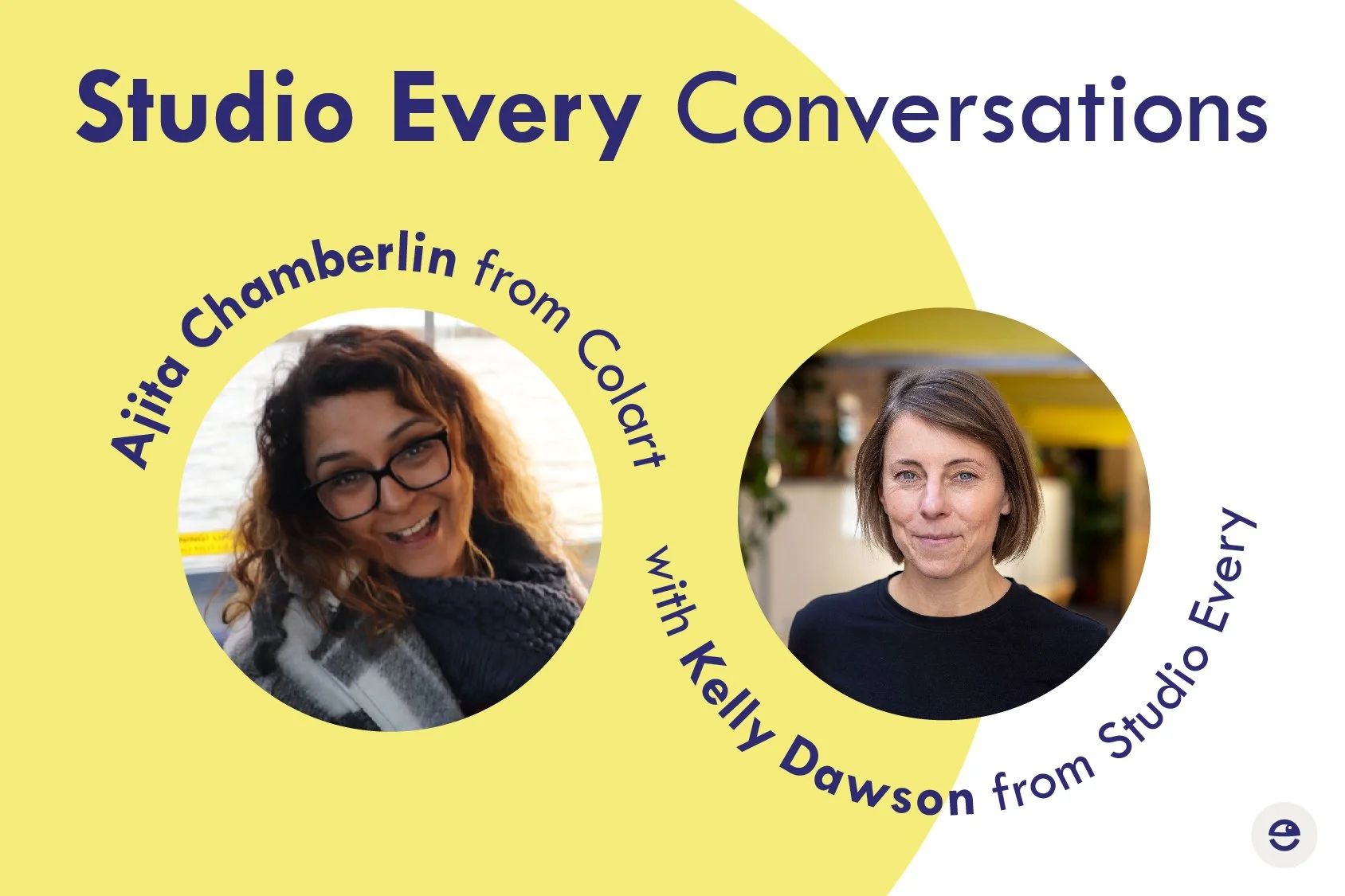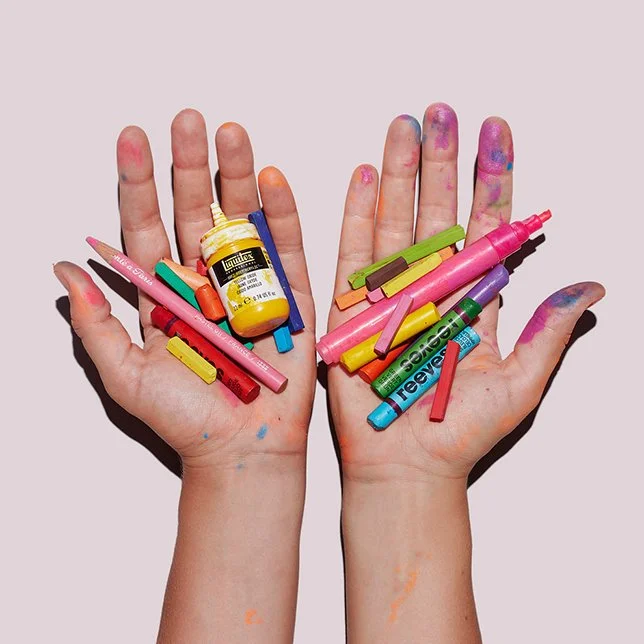Studio Every Conversations: Ajita Chamberlin from Colart, with Kelly from Studio Every
We caught up with Ajita Chamberlin, Group Sustainability Manager at Colart, to hear more about how this art materials company has focused on making improvements for the planet over the last decade and how sustainability has become embedded into their strategy.
1. Can you tell us a bit about your role at Colart?
I’m a Group Sustainability Manager at Colart, who are an art materials company, with brands such as Winsor & Newton, Conte a Paris, Liquitex, to name but a few.
My role covers many aspects and areas of sustainability. That can be from reporting milestones to data assessment for new product development. It’s very much a multifaceted role. But you can’t go alone! It takes everyone to shift the needle.
I’ve been in the current role since 2019 and started working in sustainability in 2012.
image credit: Colart
2. How has sustainability crept up the agenda in Colart?
There is a real passion for sustainability in Colart, for both society and the environment.
Jenny Linden Urnes is the owner of Lindéngruppen and sits on Colart’s board. She has very much put sustainability on the agenda as an integral part of the way we conduct business. She understands that we have an impact not just on the environment, but also on society, and therefore she wants to create value through her businesses.
We created sustainability ambassadors to weave it throughout the company with clear KPIs around governance, economic factors, toxic footprint, waste, innovation and social impact have helped us to focus on targets and improvements.
We also enable employees to have one day per year to take on a charity initiative.
Overall, sustainability and impact has been embedded into the organisation strategy.
“We need to be adaptable and think longer term. Everyone can learn from that.”
3. What are you most proud of, in terms of sustainability achievements?
You know, I am still pleased to say that I am as enthusiastic as I was 5 years ago when I took this role. You have to keep pushing. I know that we can make a positive difference – and if we don’t do something then who will?
We became B Corp a few years ago, which was an incredible achievement. It taught us to look beyond our current policies and operations, and it recognised our value to society, which sometimes in your day to day you forget that you bring.
As we manufacture and provide materials for people to create original art – it gave us the extra points to get us over the line to achieve B Corp accreditation.
But after all, B Corp is the badge of recognition – to get there takes a lot of bravery and courage. It’s a mindset. We can be short term in our thinking, but we need to be adaptable and think longer term. Everyone can learn from that.
4. Are there any sustainability examples out there that have caught your eye?
Patagonia might feel like an obvious example - but they make money out of sustainability! That’s a real indicator that it can be done.
I really like the Tilda Basmati collaboration with the artist, Natasha Kumar. The metal tin is beautiful and a lovely link to my Indian heritage.
image credit: Tilda
I love what Faith in Nature are doing, and so does my 24 year old. They relate to my world through their products and are proud to be buying plastic free products.
image credit: Faith in Nature
5. What would your advice be to teams or organisations being faced with challenges in sustainability?
There are two factors that currently make it hard to compete with certain unsustainable practices.
It really requires a multi-faceted approach, with short term solutions and long-term strategies. Sometimes we just need to get on and do the right thing (as though money is no object or barrier), then figure it out.
Some ambitions might feel out of reach but start by focusing on how to get there. Then maybe take smaller steps to get to that blue sky thinking might feel more achievable.
Also, it's important to engage stakeholders. For us, we really work on engaging communities, partners, and suppliers. Education and training for our teams has also helped bring people along too.
Sustainability needs to be embedded in the brief of everything new. It should be endorsed by the board, a top-down approach.
We as a society need to be more creative, and we have to think outside the box. We should really value behaviours like bravery and courage more, that often get labelled as soft skills, but they make the difference.
“Becoming a B Corp taught us to look beyond our current policies and operations, and it recognised our value to society, which sometimes in your day to day you forget that you bring.”
image credit: Colart
6. What do you think we could do more of as a society and as brands?
Quite frankly, not enough is happening. Infrastructure is a real challenge. Legislation and CSRD (Corporate Sustainability Reporting Directive) will move the needle. It’s a shame it has come to that, but we have had plenty of time to implement change.
Perhaps as a society we need to be uncomfortable? Question more of what we are doing – do I need to consume so much? Do I need to go on 3 flights a year? What will we sacrifice?
7. What makes you optimistic about the future?
CSRD doesn’t excite me for the future per se, but it will change behaviour and mindset. When it affects your bottom line, you will change as a business.
We need to reduce choice. It shouldn’t be an either / or option for consumers. Take the choice out. And of course, the sustainable choice should not cost more to people, we should again, be finding creative ways.







